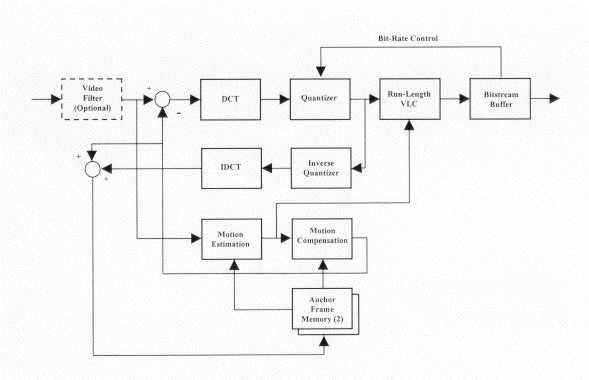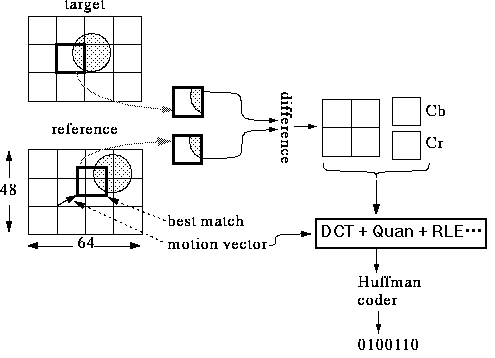
P-Frame Coding
The previously discussed intra frame coding techniques were limited to processing the video signal on a spatial basis, relative only to information within the current video frame. Considerably more compression efficiency can be obtained however, if the inherent temporal, or time-based redundancies, are exploited as well. Anyone who has ever taken a reel of the old-style super-8 movie film and held it up to a light can certainly remember seeing that most consecutive frames within a sequence are very similar to the frames both before and after the frame of interest. Temporal processing to exploit this redundancy uses a technique known as block-based motion compensated prediction, using motion estimation. A block diagram of the basic encoder with extensions for non-intra frame coding techniques is given in Figure 7.14. Of course, this encoder can also support intra frame coding as a subset.

P-Frame Coding
Each P frame in this sequence is predicted from the frame immediately preceding it, whether it is an I frame or a P frame. As a reminder, I frames are coded spatially with no reference to any other frame in the sequence.
P-coding can be summarised as follows:
